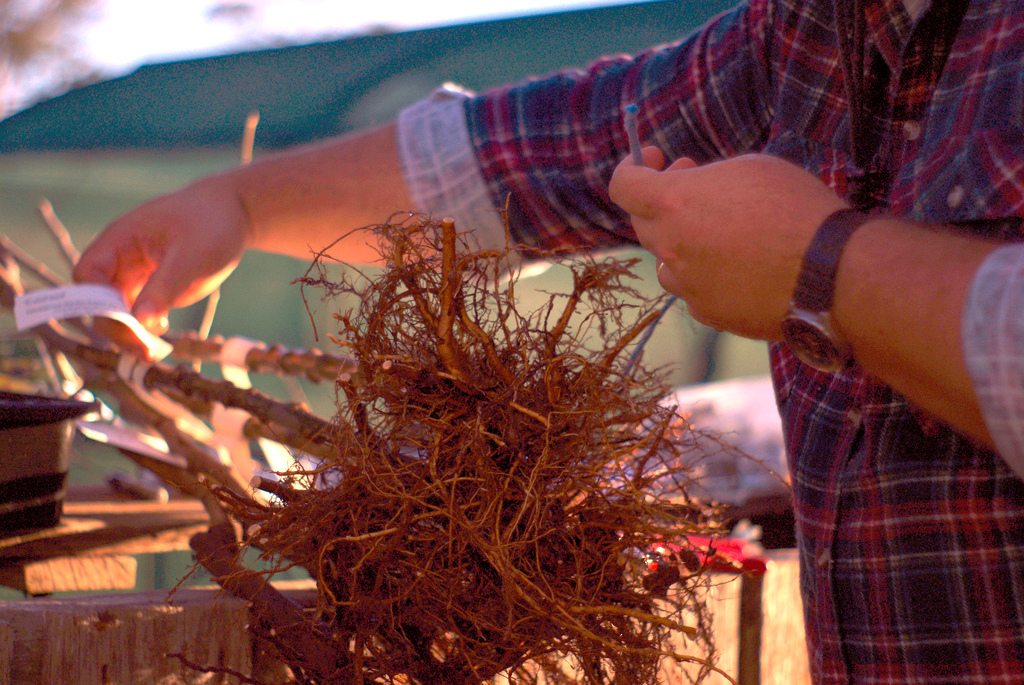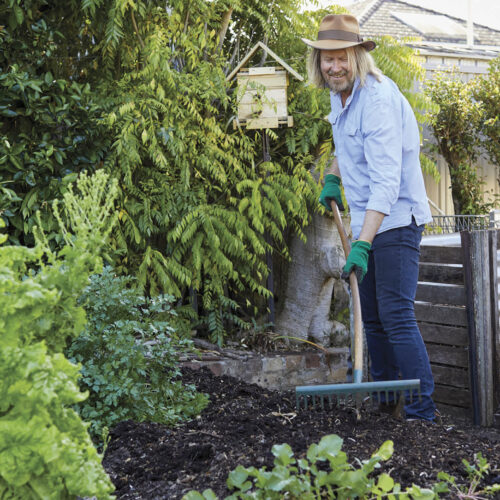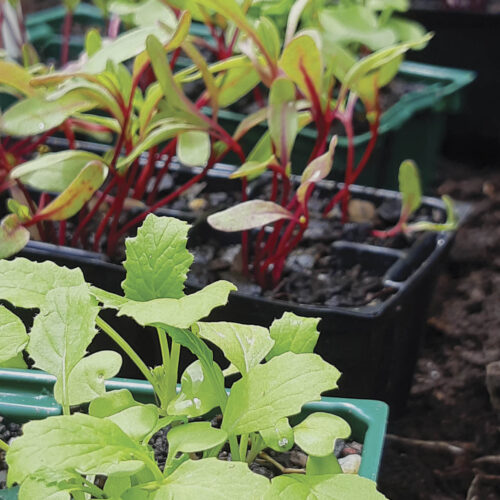Getting familiar with nude trees
2011-06-01T04:14:21+10:00
Bare-rooted ornamental and fruit trees will be appearing in nurseries toward the end of the month. JUSTIN RUSSELL explains how to plant them using nature as a guide.
There’s much to be said for the traditional field grown, bare root tree. Grown in the ground instead of a plastic container filled with potting mix, bare root trees are dug in winter once fully dormant, then sold literally without soil around the roots. Essentially, bare root trees are nude. At least until spring, when buds will burst and the trees clothe themselves with beautiful new foliage.
For the eco-minded gardener, bare root trees have a few advantages. For one, there is no plastic pot to manufacture and dispose of. Two, field grown trees need less water than potted trees. And thirdly, bare root trees are very light. Compared to heavy trees in round pots, they are easy to pack and transport, and can even be sent through the mail. The only major downside to bare root trees is one of education. Because the vast majority of plants sold today are containerised, people aren’t as familiar with the concept of bare rootedness as they once were.
Many gardeners have never purchased a bare root tree, let alone nurtured one, which means that lots of mistakes are made during the early stages of a tree’s establishment. The most common of these is that trees get planted into large holes filled with lots of rich manure, compost and slow release fertiliser. This practice is widely championed in the garden media, but it bears little resemblance to the process of tree reproduction in nature. In the wild, a mature tree will seek to reproduce itself by producing seed that falls, comes into contact with the ground, and if conditions are right, germinates and grows to become a new tree. There is no gardener running around creating luxurious planting holes filled with manure. Granted, wild trees produce copious amounts of seed to ensure a high chance of success.
With a single bare root tree, the gardener has only one shot at getting it right, but the principle holds true – nature is our best guide.
When planting a bare root tree, work with your site. Select varieties suited to your soil and climate. Choose a planting date just before rain is predicted so that irrigation isn’t as necessary. Try not to create luxury planting pits. If your soil is very poor or compacted, use gypsum and fully rotted compost to improve the structure, but never, ever add manure that hasn’t fully decomposed. Not only is fresh manure likely to burn plant roots, it will also shrink during decomposition and create air pockets. In turn, these air pockets can cause roots to dry out, and the tree may struggle to shoot in spring. Basically, you should do as little to the soil as possible when planting a bare root tree. Also, unless the newly purchased tree is a “standard” grafted onto a tall trunk, you should avoid staking.
If the site is protected, you can probably get away with doing nothing, but if it’s exposed and windy, either plant a smaller tree, or cut the tree back upon planting to about half it’s size. It takes discipline to cut a six-foot tall plant in half, but in the long run you’ll be rewarded with a strong tree that provides pleasure for many decades to come.






